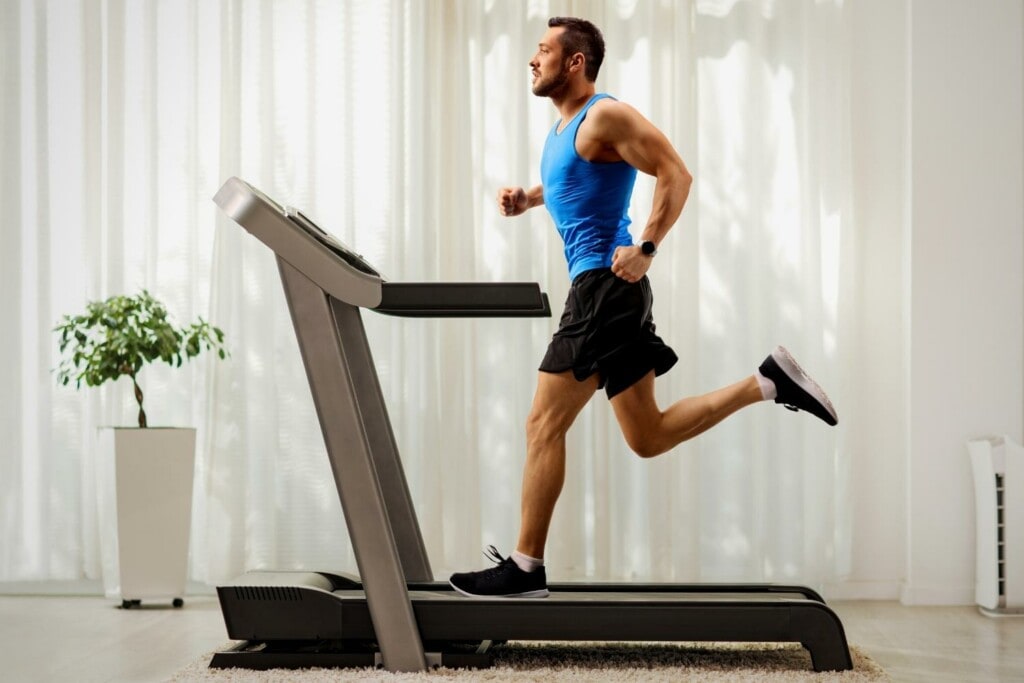Published on: 10/26/2022
Running on a treadmill has lots of benefits. It can help those who can’t get outside to keep exercising. It’s a great at-home exercise equipment, a useful tool for structured workouts, and to gradually increase running volume, speed, and intensity. However, treadmills can also have their dangers – from injuries caused by not paying attention to the moving belt to possible risks for others like children or pets.
This article will give you an overview of the possible risks, potential injuries, and the all-important tips for staying safe while running on a treadmill to find out how to make the most of your treadmill without compromising safety.
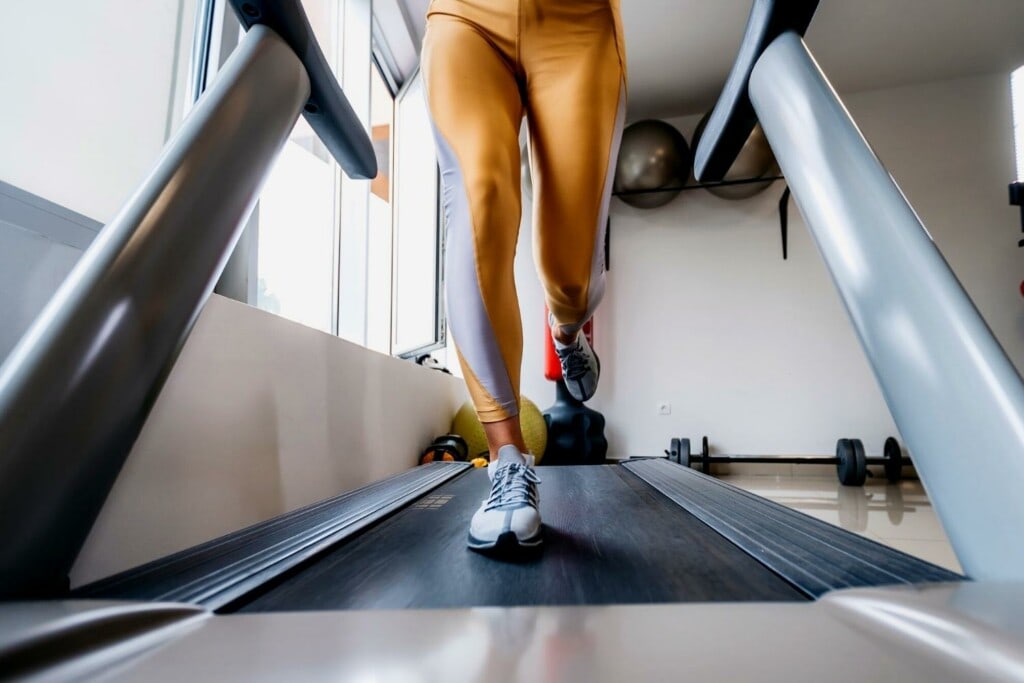
How safe are treadmills?
To understand treadmill safety, we must first look at this type of fitness equipment setup and where risks can occur. It’s safe to say that most treadmills that have caused accidents are found at home. That’s why choosing the right type of equipment for you is so crucial.
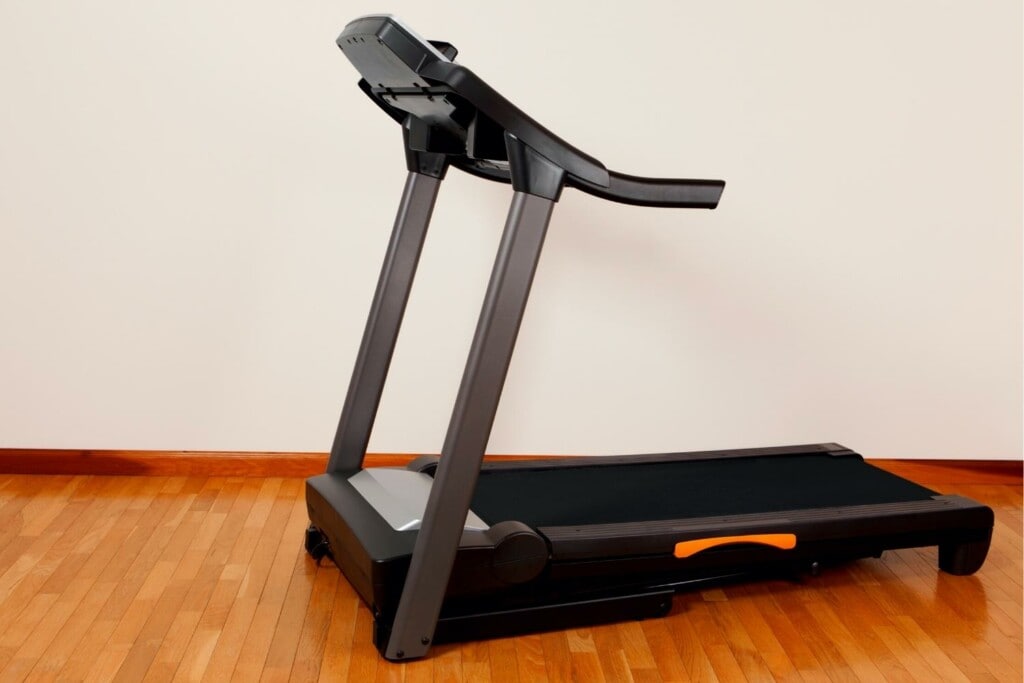
While fully electric treadmills have a moving belt that is completely controlled by the dashboard and propel you forward through the ongoing motion, you could also purchase manual treadmills. Those rely on the runner’s power to move the belt.
The type of home treadmill you choose depends on the level of power or support that you require, as well as on the space you have available.
Are treadmills unsafe?
Serious injuries that involve exercise equipment are most often treadmill injuries. According to USA Today (1), the U.S. Consumer Product Safety Commission counts around 24,400 treadmill accidents per year. They also signaled about 30 deaths linked to treadmills from 2003 to 2012.
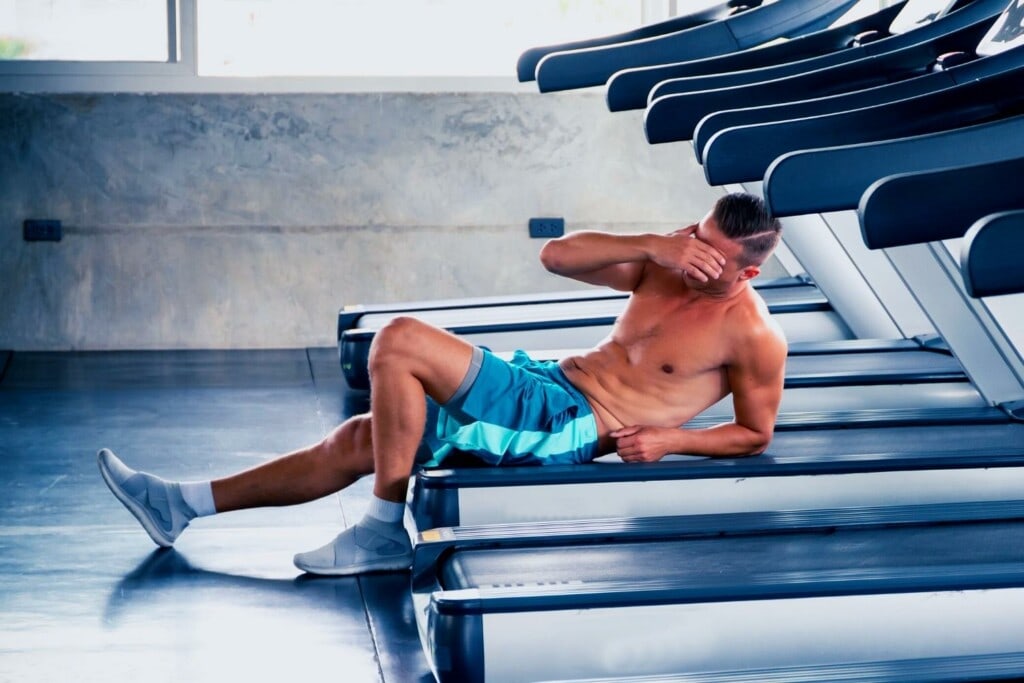
Additionally, recent news shocked the world when Peloton was forced to recall their Tread and Tread+ machines after a child’s death in 2021 (2). While these statistics and news make for grim reading, it’s important to understand what makes treadmills unsafe:
- Runners using a treadmill can become distracted, leading to trips and falls, mostly minor injuries;
- Using inappropriate footwear can lead to injuries;
- People and/or animals not using a treadmill can be injured by accidentally being pulled under the moving belt.
For runners, treadmills can constitute a tripping hazard, but most treadmill injuries can be avoided by taking extra care to learn how to keep safe. Ensuring that home treadmills are stored in a dedicated room is an important step. If not possible, at least you should only use it when children and pets are not around to keep them from becoming a hazard. Next up, we’ll look at what the most common injuries are and how you can prevent them.
4 common treadmill injuries
While rowing machines, steppers, or dumbbells rely on the user to move them and possibly cause any impact or serious injury, traditional motorized treadmills have the disadvantage of moving on their own, possibly at high speed.
This means that gym managers or staff must take safety precautions to ensure that users know the possible hazards. However, those who have a home treadmill have double the risk on their hands. Indeed, other people who haven’t been given safety tips might come into contact with the machine.
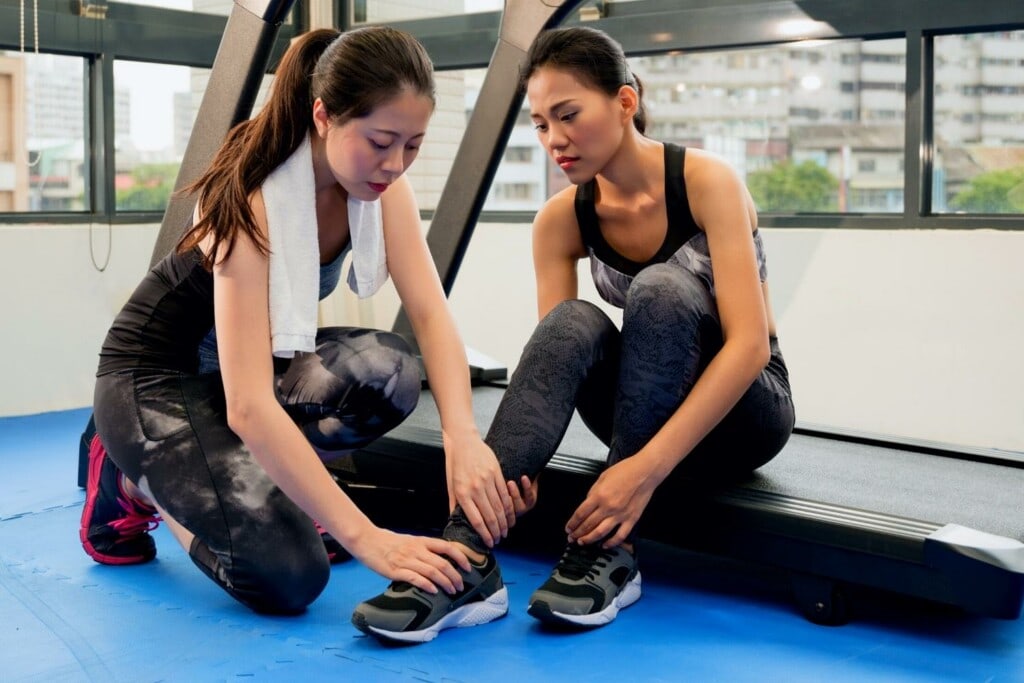
This is why one of the most common treadmill injuries includes others getting injured. Whether working out in a home gym or at a sports club, you should always be aware of the hazards directly affecting runners to prevent accidents.
Injury to family members and others
Treadmills cause most home exercise equipment injuries, but most often, these are not user falls or trips. Instead, small children coming into contact with the machine and getting caught by the belt in motion, or pets being inadvertently swept under or over it, can be a real source of trouble.
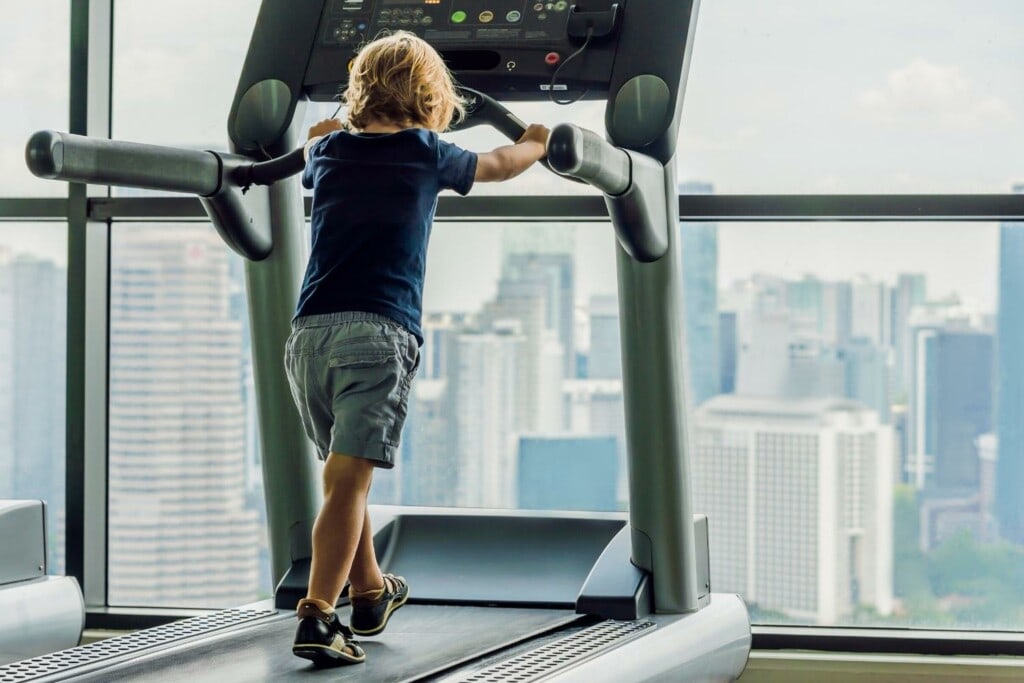
According to the American Council on Exercise (3), one of the key drivers behind these injuries is the fact that children, pets, or unsuspecting relatives simply don’t pay attention to the machine. This is also the case for runners, but we’ll come back to that shortly. For third parties, walking past a moving treadmill and getting caught by the belt can result in trips and falls. An unattended treadmill can also be turned on and set to increase speed by a child, who will not have the same control over it as an adult. They can then be swept off the belt or, worse, be pulled under it.
To prevent this type of treadmill accident, you should keep your home gym or dedicated space for your treadmill. It should be out of immediate reach for untrained or inattentive persons or animals.
Accidental injuries to treadmill users
The other key source of treadmill-related injuries is those that can affect the runners themselves. Looking at your phone, getting distracted, or simply not keeping a good balance on a treadmill can lead to a fall which, in turn, can become an injury.
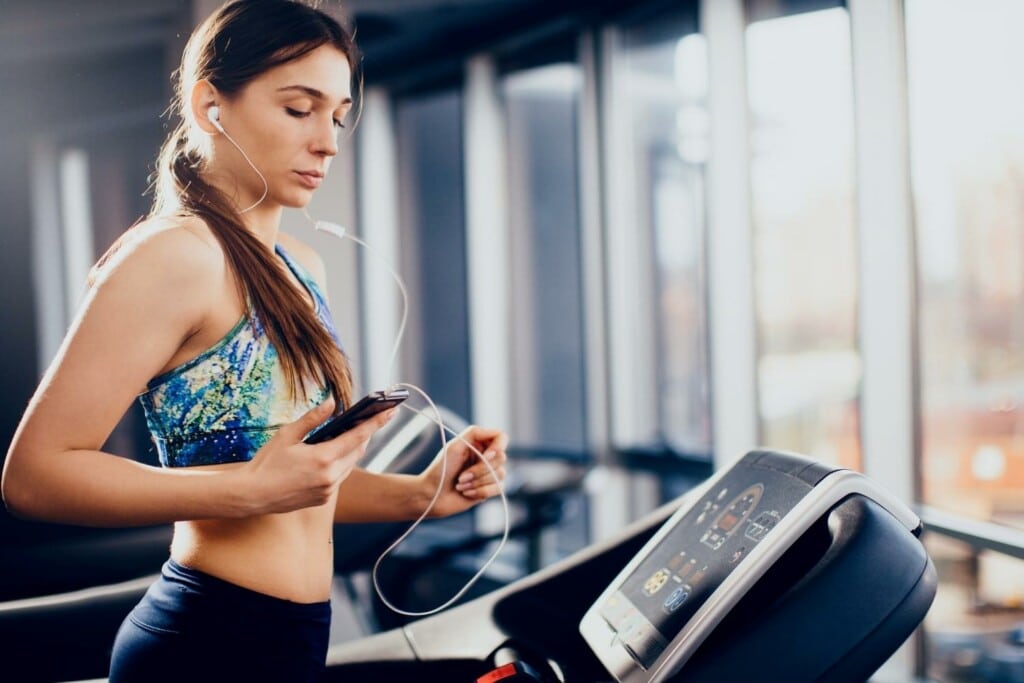
Since the treadmill belt helps propel your forward, it’s easy to forget to pay attention to your surroundings like you would when running outdoors. Many indoor runners tend to watch TV while on a home treadmill, which can become distracting. This is particularly dangerous if you have set up a training program or preset workout on the treadmill. It might kick in at a different speed or incline, taking you by surprise if you’re unaware.
Accidental injuries can include falls and friction burns caused by landing on a moving belt without being able to stop it right away. It’s important to also find adequate space for your treadmill if you’re setting it up at home. Indeed, you will need a good amount of clearing above and around you to work out safely. When running on a treadmill, you will bounce upwards and can hit your head against a low ceiling. This becomes even more relevant if you use an incline treadmill. Finally, running in a tight space can get quite claustrophobic and will prevent good ventilation, which is also essential for health and safety.
Overuse injuries
As with running outdoors, running on a treadmill can lead to some overuse injuries. Given the repetitive motion and the relatively high impact of landing on a hard surface, treadmill running can lead to knee pain, specifically pain in the patella (4) and possibly some Achilles tendon (5) pain.
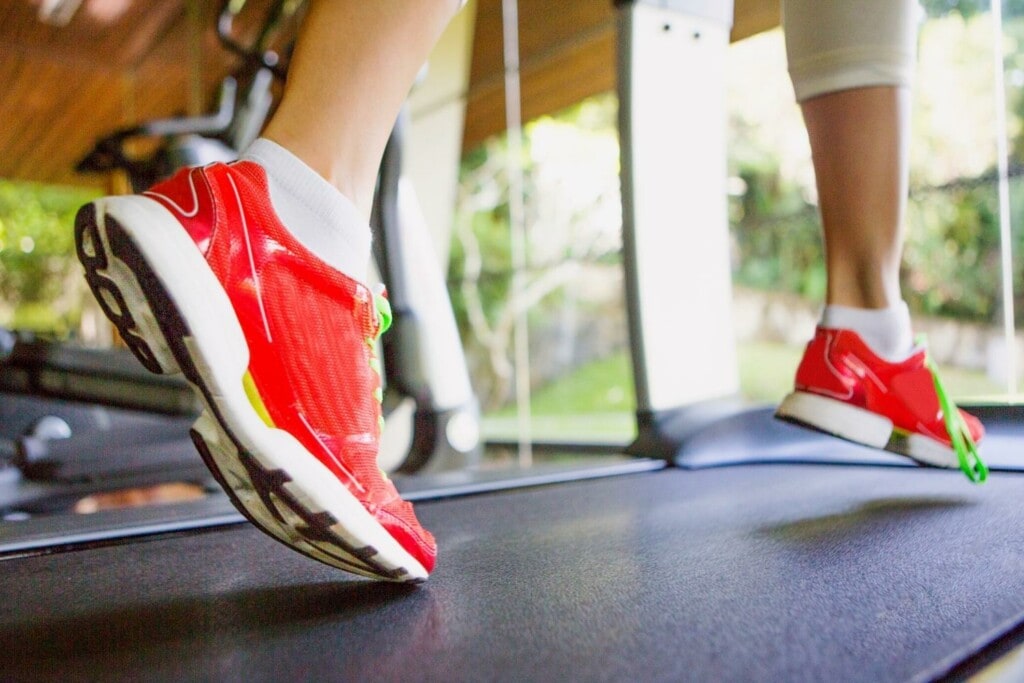
These injuries occur outdoors as well, but indoor runners or those moving from the outdoors inside need to be careful of the change in movement patterns and how these impact their body mechanics. If you’re used to running on trails, the underfoot conditions change often, and your feet land at angles. This gives you variety to work small muscles along the lower legs. After that, switching to treadmills can take a bit of an adjustment.
Footwear related injuries
For new runners and those changing from outdoor to indoor workouts, proper running shoes are an important part of treadmill safety. Any regular running shoes will often be sufficient. However, generic sports shoes that are not designed for running can be uncomfortable. They can create blisters and sore feet, leading to worse balance and possibly tendon and joint injuries.
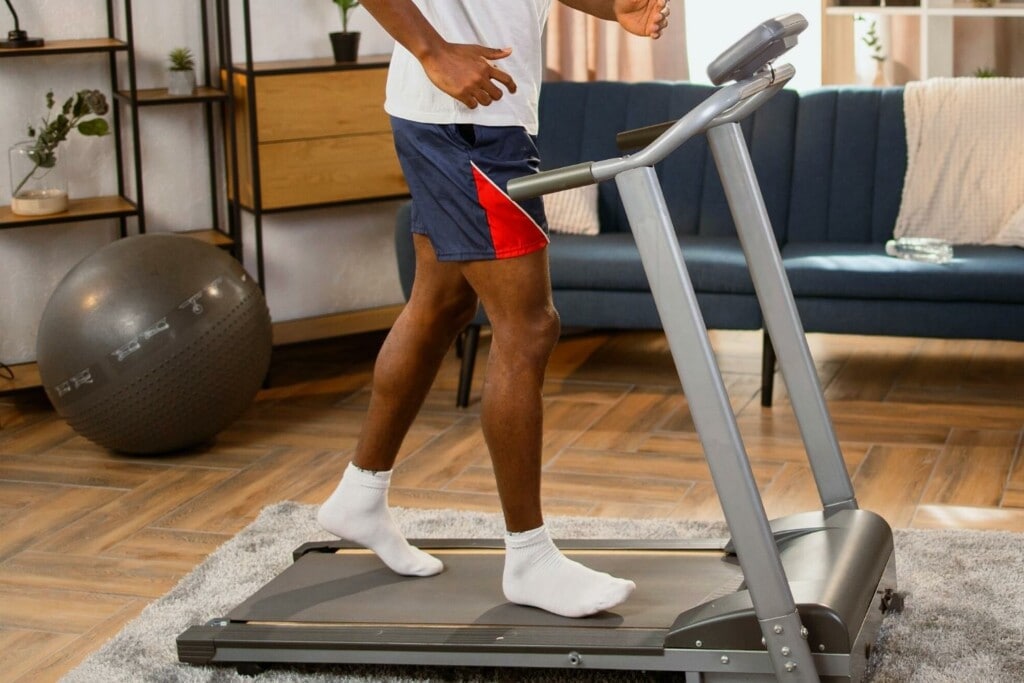
5 important tips to prevent treadmill running injuries
To make the most of your new treadmill and avoid injury, here are some treadmill safety tips to follow.
1. Set up your treadmill in a dedicated, appropriate space
Always ensure that you have a good amount of space around and above your treadmill if setting it up at home. This helps with better ventilation and prevents you from hitting your head when bouncing and from hitting other objects or people nearby.
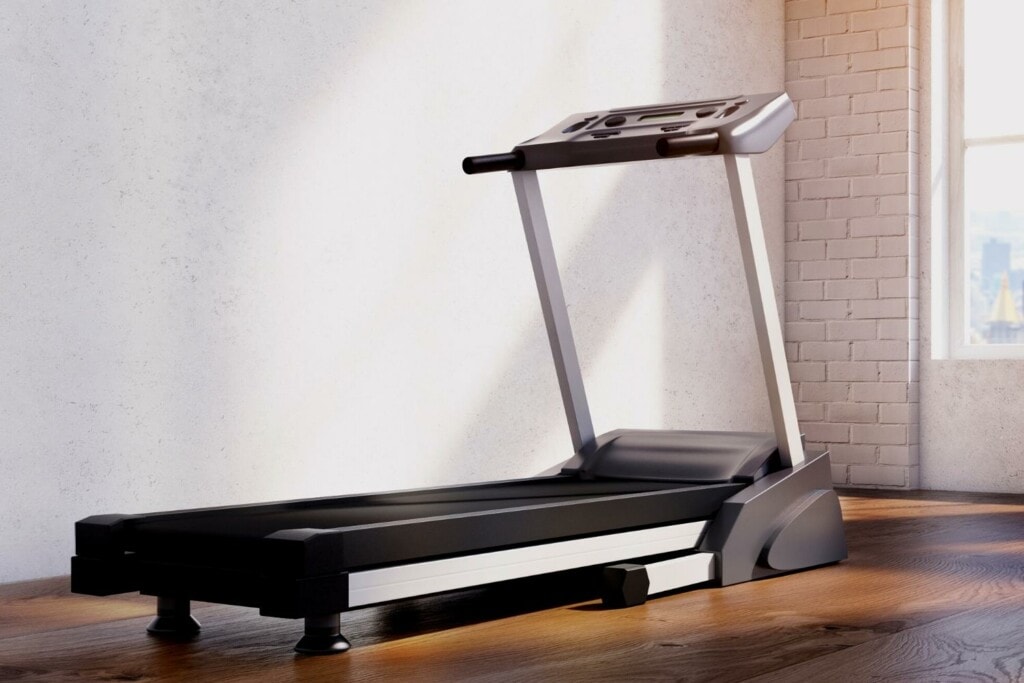
Additionally, having your treadmill in a separate room or dedicated space reduces the risk of untrained people coming into contact with it. It’s also a good idea to unplug it from the electric socket so it cannot be turned on by accident. Finally, a folded treadmill or one that you can wheel off can be good options for a smaller home space where you want to store the machine away safely.
2. Keep children and pets away
Anyone who is unlikely to be trained in treadmill safety should be kept away from one. This includes children and pets who won’t know how to control it. It also extends to relatives and unsuspecting visitors.
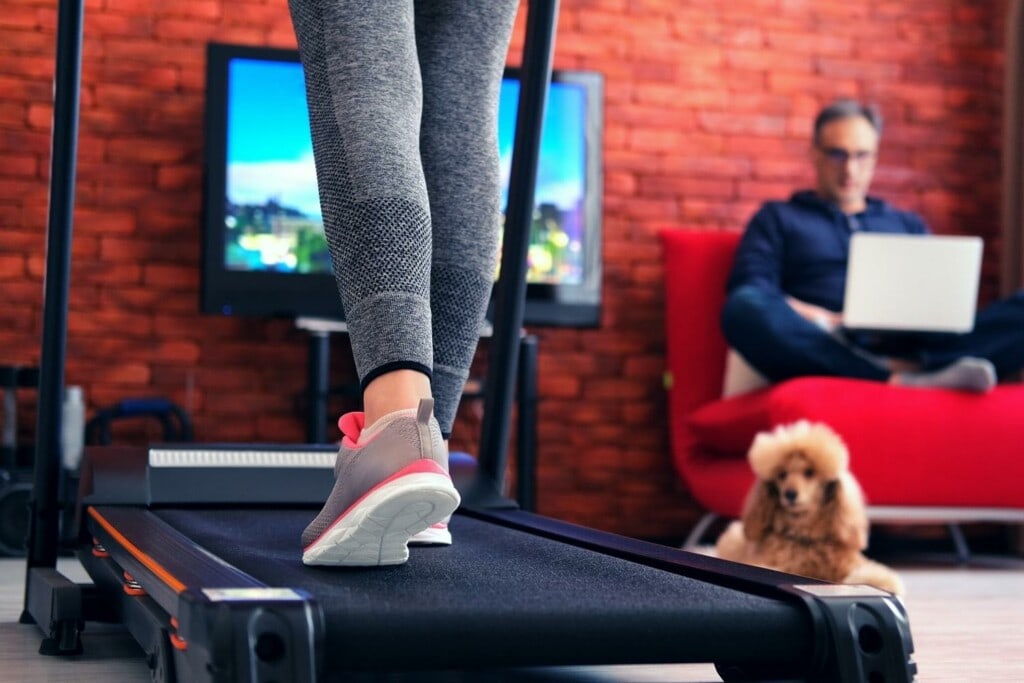
When exercising, you should also prevent others from being nearby. This way, the belt won’t accidentally catch them when you’re not paying attention.
3. Wear appropriate shoes and running clothing
To avoid sustaining an injury yourself, make sure that you invest in appropriate running shoes and kit. Breathable, lightweight fabrics and materials are ideal for indoor training. Indeed, you are likely to have less air circulation, and you’ll be sweating more.
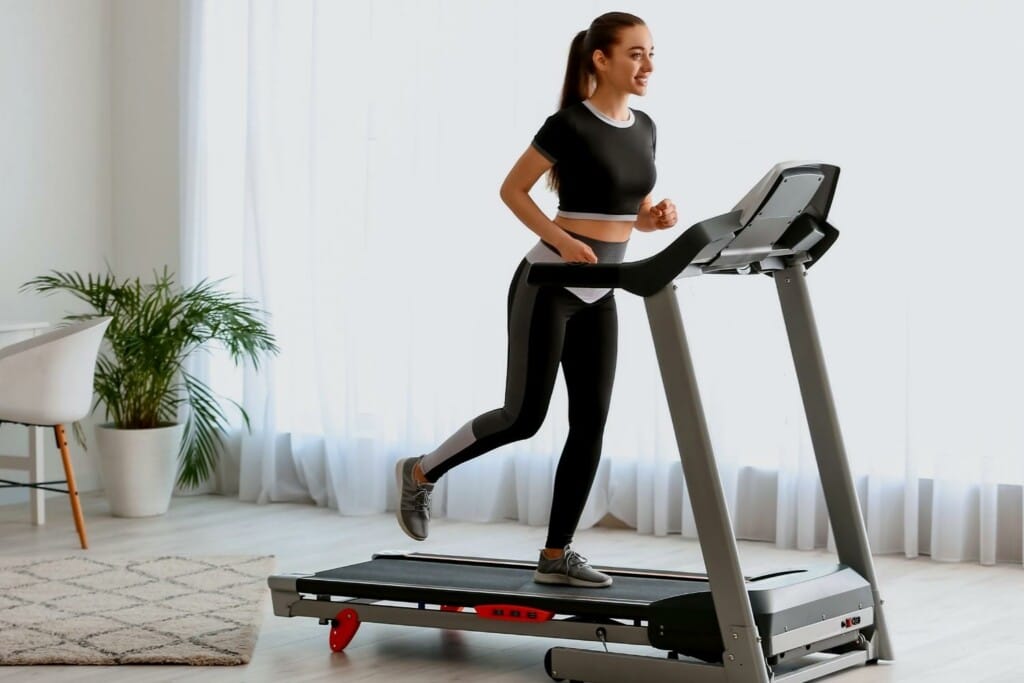
Running shoes designed for the road, with a good level of cushioning, are good for most treadmills. We’d also advise that you have a dedicated pair for indoor running, so you’re not bringing in dirt and debris that can actually damage your treadmill. If you only have one pair, make sure it’s clean!
4. Progress gradually and don’t overtrain
Overdoing it leads to runners getting injured on even the best treadmills and can even land you with broken bones due to stress fractures. When you transition to treadmill running, start by becoming familiar with the programs and settings. Move at a slow pace and ensure you can quickly work your way through all the controls as needed.
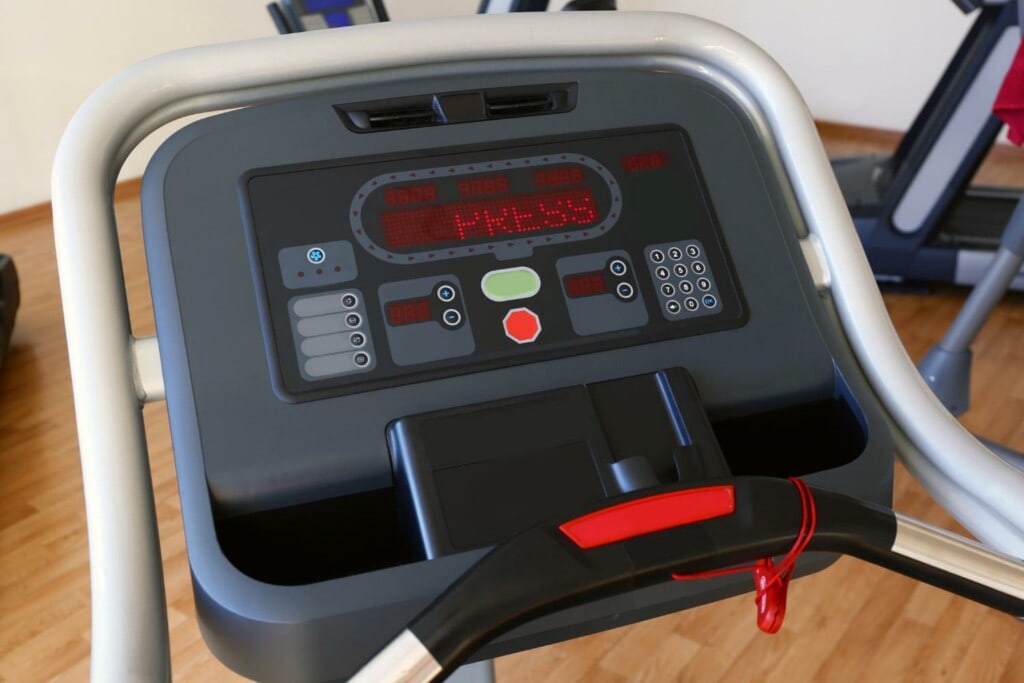
Start off by running 20-30 minutes on the treadmill, then slowly progress and follow a training plan.
5. Follow safety rules for treadmill use
Almost all treadmills have a safety clip that can be attached to the runner. It switches off the machine if you’ve lost control of the pace. This is extremely important to prevent you from falling off. It’s the one safety measure all gyms will teach before they let you run on their treadmills!
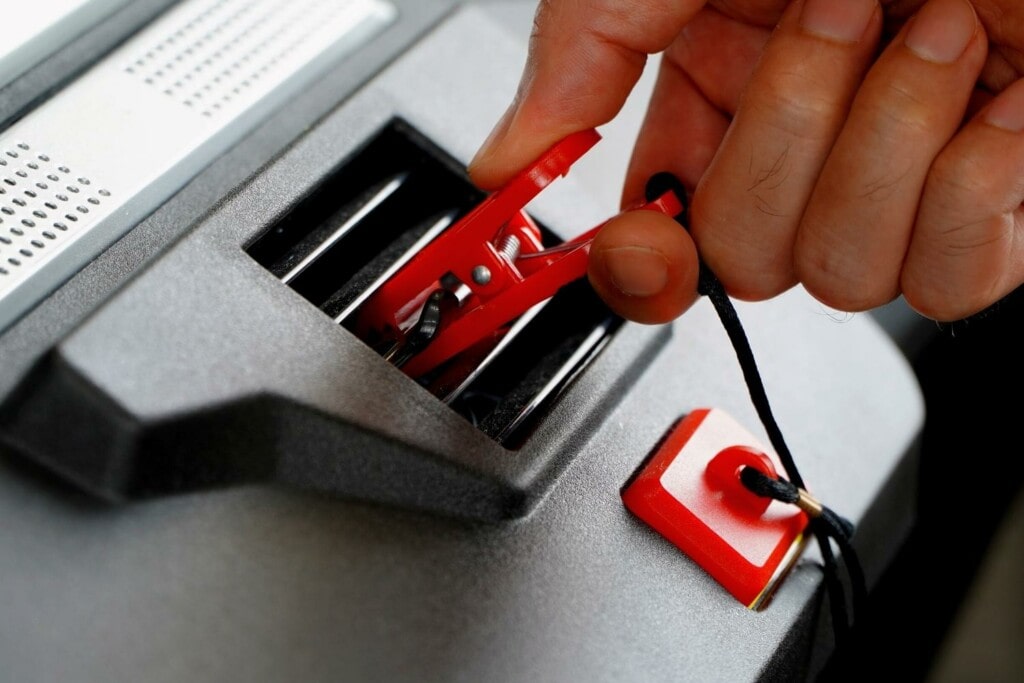
Here are some more safety steps you should take:
- Always straddle the belt first, holding on to the handrails, before starting your program;
- Don’t step off a moving treadmill – step onto the sides, turn it off, then step off;
- Pay attention – don’t simply switch off and watch TV or listen to music, instead stay aware of the program you’re running on, surrounding activity, etc.;
- Look forward and maintain an upright, correct running form. Avoid looking at TVs or anything that’s not directly in front of you;
- Don’t rely on handrails or pull yourself off or up on them while the belt is moving under your feet. Firstly, you can easily lose control of the treadmill and fall off this way. Moreover, if you’re holding on while running, you’re taking weight off your legs. This means not getting the full benefit of the workout;
- Don’t increase speed and incline at the same time: give yourself some time to adjust to one stimulus, then the other.
Prevent injuries and run indoors safely
Most people come in contact with treadmills in a gym, where they are trained in treadmill safety before being allowed to use them. However, with a recent increase in home exercise equipment sales, accidents are set to continue as treadmills, especially when children and pets enter the picture. They can also represent injury hazards for the runners themselves. However, following a few simple tips, using the built-in safety features (like the treadmill safety key), and wearing proper footwear will go a long way!
References
https://www.bbc.com/news/business-56993894
https://www.washingtonpost.com/wellness/2022/01/04/avoid-treadmill-accidents-kids-home/

